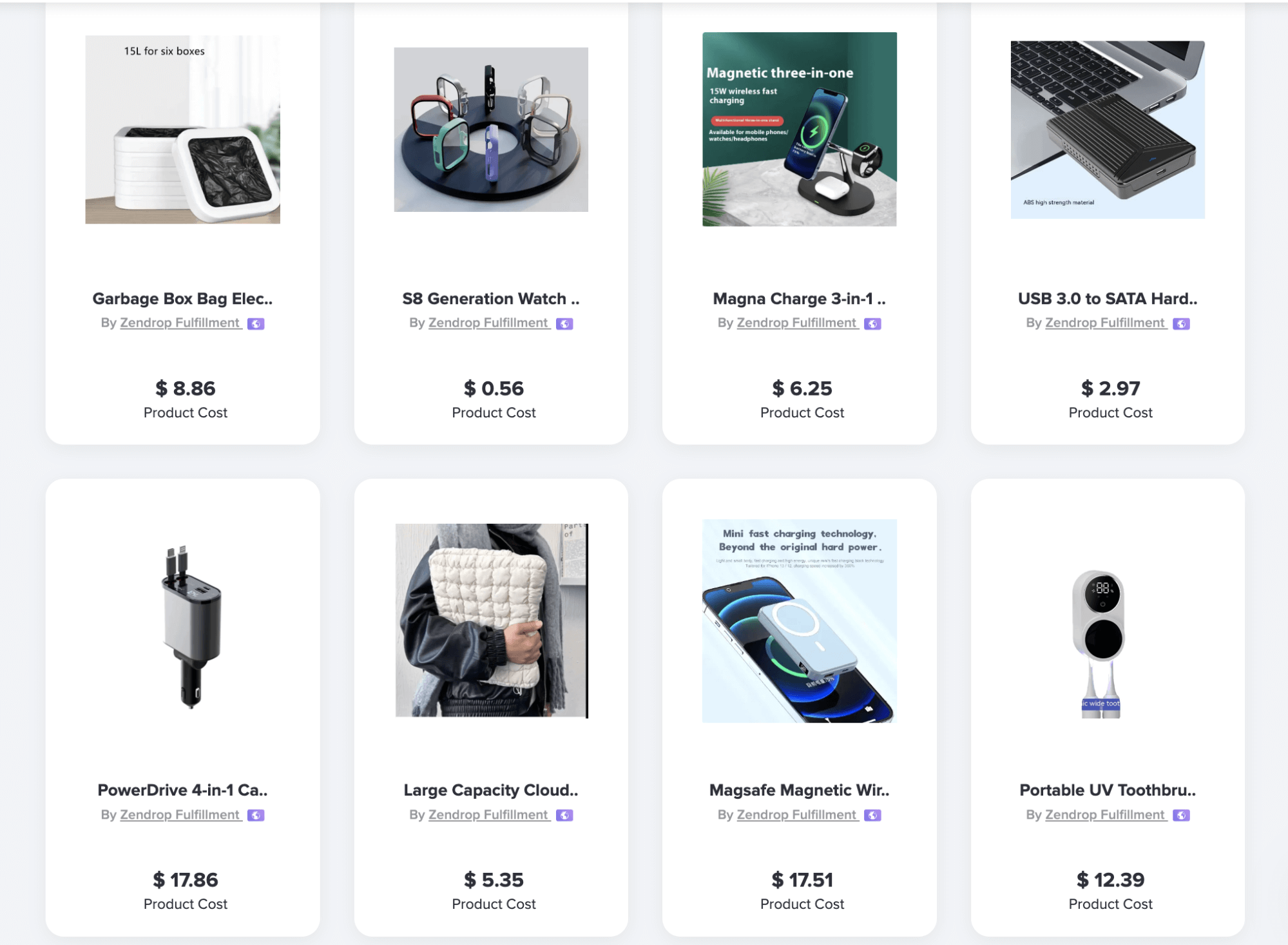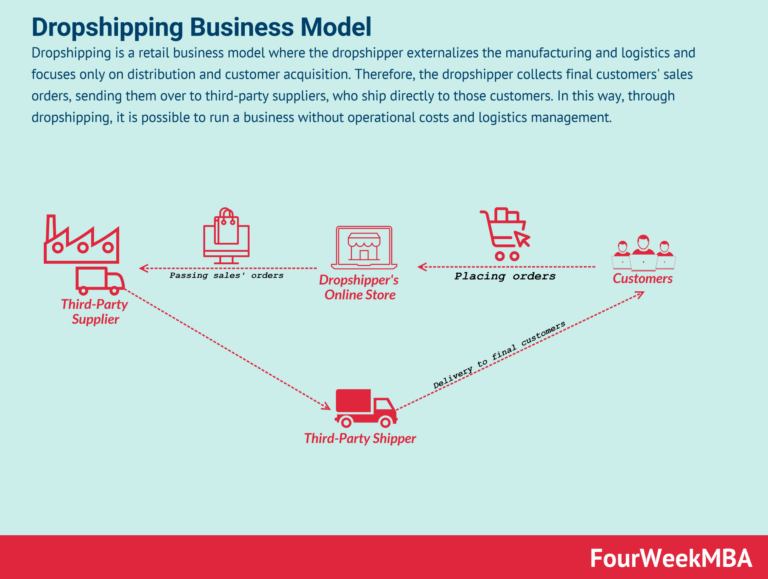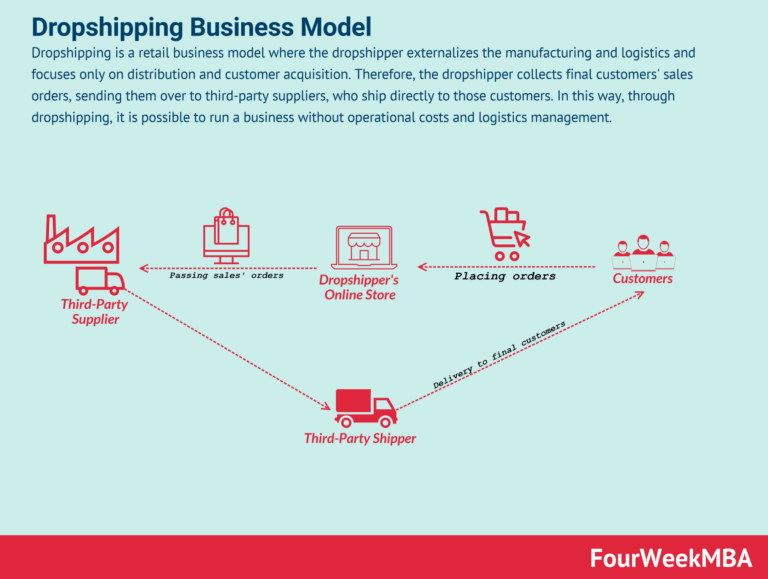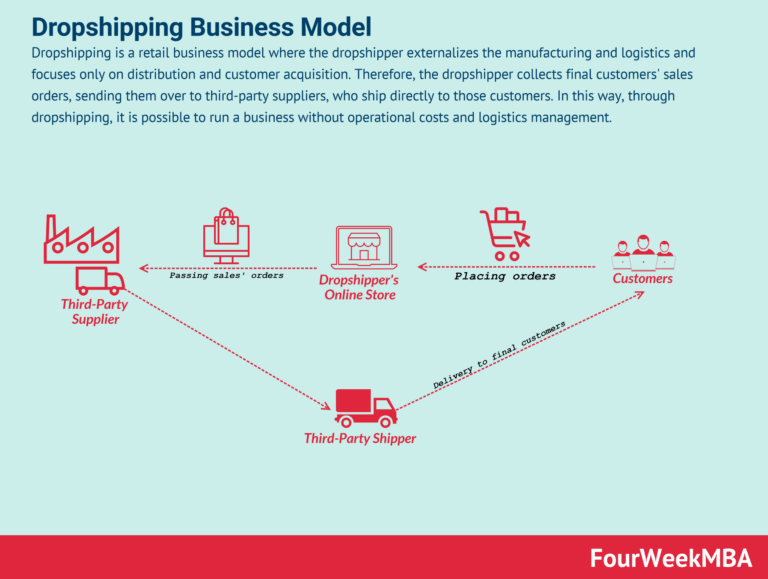What Is Dropshipping and How Does It Work? (2025)
Your Complete Guide to top dropshipping items
Welcome to Your Dropshipping Journey!
Starting your own business is a thrilling venture, and it’s clear you have the ambition and drive to make it happen. If you’re reading this, you’re likely looking for ways to dive into the world of e-commerce without the hefty price tag of traditional retail. Enter dropshipping—a business model that allows you to sell products online without ever needing to hold inventory. This means you can focus on what really matters: marketing your brand and connecting with customers.
What makes dropshipping particularly appealing for aspiring entrepreneurs and small business owners is its low startup cost and flexibility. You don’t need to invest thousands in inventory upfront or worry about warehousing costs. Instead, you partner with suppliers who handle the storage, packing, and shipping of products directly to your customers. This allows you to spend your time on building your online presence, optimizing your store, and crafting compelling marketing strategies.
In this guide, we will provide you with a complete roadmap to navigating the dropshipping landscape. You’ll learn how to identify trending products that resonate with your target audience, evaluate the best niches to focus on, and understand the qualities that make a product ideal for dropshipping. We’ll also cover how to effectively market your store and convert visitors into loyal customers, ensuring you’re not just making sales, but building a brand.
Furthermore, we will delve into essential tools and strategies for managing your dropshipping business, from selecting reliable suppliers to optimizing your online store for maximum conversion rates. Each step will be designed to empower you with the knowledge and confidence to take action.
As you embark on this journey, remember that every successful entrepreneur started where you are now—with a dream and a desire to make it a reality. With dedication, the right mindset, and the insights from this guide, you can turn your entrepreneurial aspirations into a thriving online business. Let’s get started on this exciting path to success together!
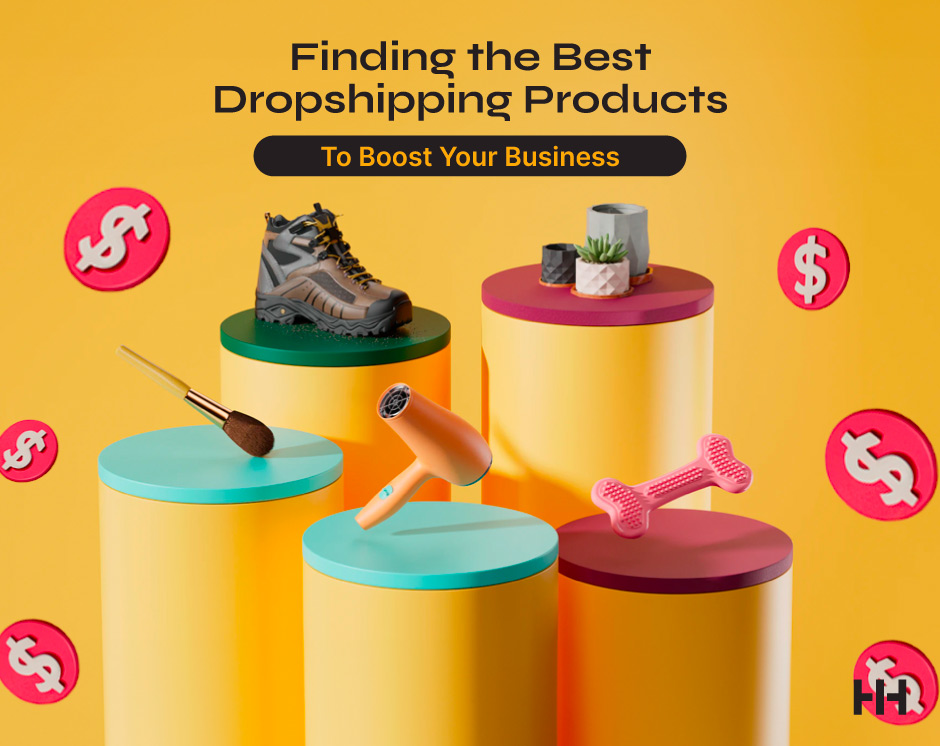
What You’ll Learn In This Guide
- Your Complete Guide to top dropshipping items
- How Does Dropshipping Actually Work? A Step-by-Step Breakdown
- The Pros and Cons of Dropshipping: Is It Right for You?
- Step 1: Finding a Profitable Niche and Winning Products
- Step 2: Choosing the Right Dropshipping Suppliers
- Step 3: Building Your Online Store
- Step 4: Marketing Your Dropshipping Business to Get Sales
- Common Mistakes to Avoid as a Beginner
- Frequently Asked Questions (FAQs) about top dropshipping items
- Conclusion: Your Next Steps to Launching Your Business
- Important Disclaimer
How Does Dropshipping Actually Work? A Step-by-Step Breakdown
Understanding the Dropshipping Model: A Step-by-Step Guide
Dropshipping is an innovative e-commerce model that allows entrepreneurs to sell products without holding inventory. This makes it an attractive option for beginners and small business owners looking to minimize upfront investment. Here’s a clear breakdown of how dropshipping works, step by step:
- Customer Places an Order on Your Online Store
- The process begins when a customer visits your e-commerce store and finds a product they want to buy. They add it to their cart and proceed to checkout, entering their shipping details and payment information.
-
Analogy: Think of your online store as a digital storefront. Customers browse through your offerings, just like they would in a physical shop.
-
You Receive the Payment
- Once the customer completes their purchase, you receive the payment for the order. This includes the sale price of the product and any applicable shipping fees.
-
Key Point: Ensure that your payment gateway is secure and reliable to build trust with your customers.
-
You Forward the Order to Your Supplier
- After receiving the order details, you then forward this information to your dropshipping supplier. This typically involves sending the product details, customer address, and payment for the wholesale cost of the item.
-
Important: Choose a trustworthy supplier who can fulfill orders accurately and in a timely manner. Your reputation hinges on their performance.
-
The Supplier Ships the Product Directly to the Customer
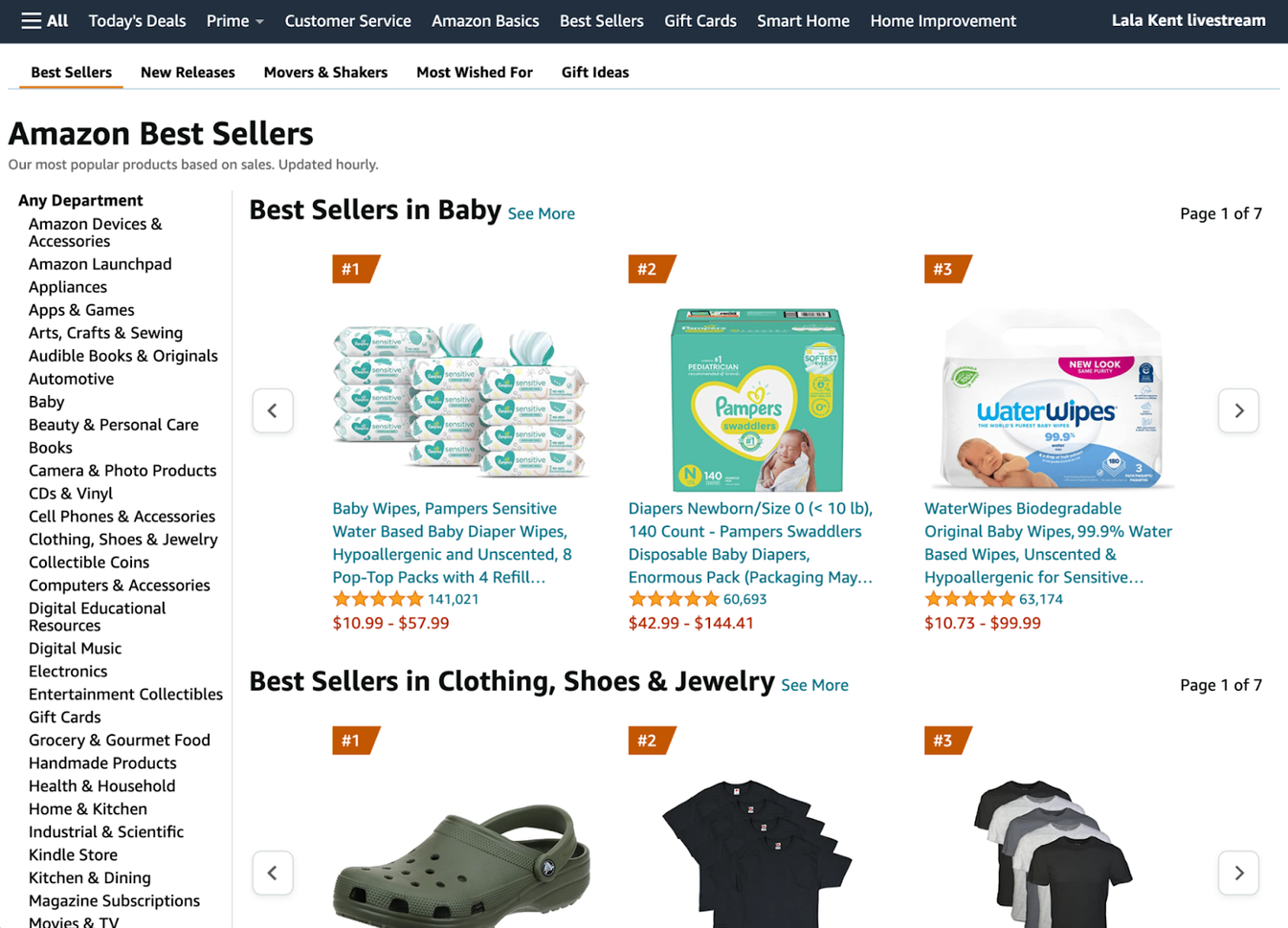
- Once the supplier receives your order, they pick, pack, and ship the product directly to your customer. The shipping label may bear your business name, making it seem like the product came straight from your store.
- Flow of Goods: The physical product never passes through your hands. This streamlined process allows you to sell a wide range of products without the need for inventory storage.
The Flow of Money and Goods
In this model, the flow of money and goods is straightforward:
- Money Flow:
- Customer → You (retail price) → Supplier (wholesale price)
-
You profit from the difference between the retail price and the wholesale price (minus any fees associated with payment processing).
-
Goods Flow:
- You (the seller) → Supplier → Customer
- The supplier handles the logistics of packing and shipping, allowing you to focus on marketing and customer service.
Why This Model Works
The dropshipping model is advantageous because it eliminates the need for significant upfront investment in inventory. You can curate a diverse selection of products and respond quickly to market trends without the risk of unsold stock.
Moreover, the simplicity of the process allows aspiring entrepreneurs to start their online business with relative ease. By acting as the middleman, you can focus on building your brand, optimizing your website, and driving traffic to your store.
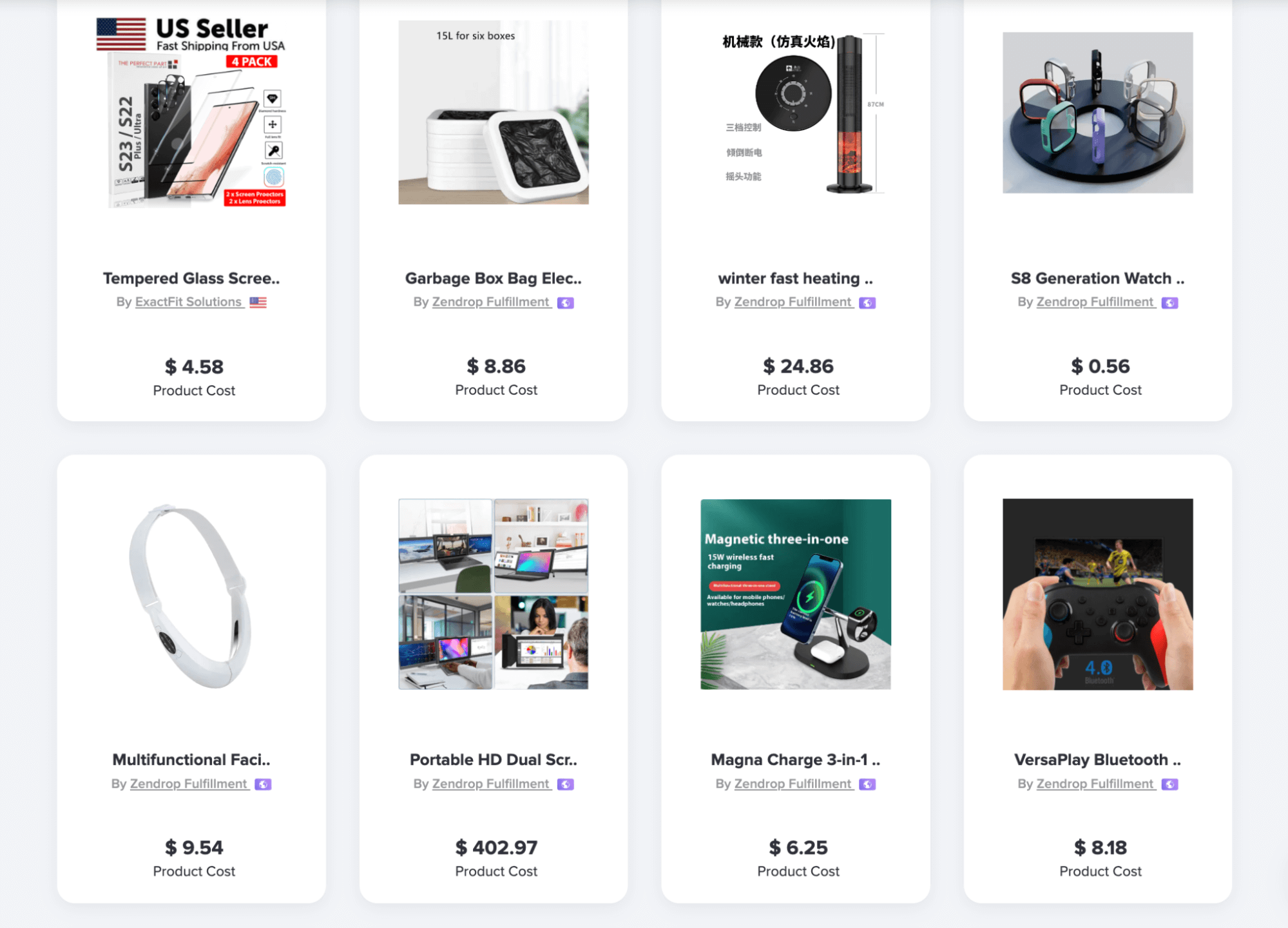
Final Thoughts
Starting a dropshipping business may seem daunting, but understanding the flow of operations makes it much easier. With the right mindset, reliable suppliers, and effective marketing strategies, you can turn your digital storefront into a successful online business. Embrace the journey, learn as you go, and remember that every successful entrepreneur started somewhere!
The Pros and Cons of Dropshipping: Is It Right for You?
Advantages and Challenges of Dropshipping
| Advantages of Dropshipping (Pros) | Challenges of Dropshipping (Cons) |
|---|---|
| Low Financial Risk | Low Profit Margins |
| No need for significant upfront investment in inventory. | Profit margins typically range from 10% to 30%, limiting potential earnings. |
| Easy to Start | High Competition |
| Setting up an online store is straightforward with minimal technical knowledge required. | The low barrier to entry attracts many sellers, leading to crowded markets. |
| Wide Product Selection | Quality Control Issues |
| Access to a vast range of products from various suppliers. | Sellers often lack control over product quality and fulfillment processes. |
| Location Independence | Shipping Complexities |
| Operate your business from anywhere with internet access. | Managing shipping costs and delivery times can be complicated, affecting customer satisfaction. |
| Scalability | Dependence on Suppliers |
| Easily scale your business without the constraints of managing inventory. | Your business success heavily relies on supplier reliability and performance. |
| Focus on Marketing and Sales | Customer Service Challenges |
| More time to devote to marketing and customer engagement rather than logistics. | Issues like returns or delays must be handled effectively, which can be challenging without direct control. |
Exploring the Advantages of Dropshipping
Dropshipping is particularly appealing to aspiring entrepreneurs due to its low financial risk. Unlike traditional retail models that require significant capital for inventory, dropshipping allows you to start selling products without investing in stock. This means you can test various products and niches without the fear of losing money on unsold inventory. For beginners, this can be a game-changer, enabling you to enter the e-commerce space with minimal financial commitment.
Another significant advantage is the ease of starting a dropshipping business. With platforms like Shopify, WooCommerce, and others, setting up an online store is more accessible than ever. You can focus on choosing products and creating a user-friendly website rather than dealing with complex logistics. Moreover, dropshipping provides a wide selection of products from numerous suppliers, allowing you to cater to diverse customer preferences and trends without the constraints of holding stock.
Location independence is another attractive feature of dropshipping. As long as you have a reliable internet connection, you can manage your business from anywhere in the world. This flexibility appeals to many entrepreneurs who desire a lifestyle that allows for travel or remote work.
Furthermore, dropshipping enables a business model that emphasizes scalability. As demand for your products grows, you can expand your offerings without the logistical headaches associated with managing inventory. This scalability allows you to focus on marketing and sales, potentially leading to greater profits over time.
Addressing the Challenges of Dropshipping
Despite its numerous advantages, dropshipping is not without its challenges. One of the most significant drawbacks is the low profit margins. While the potential for high sales exists, the reality is that many dropshipping products yield only modest profits. Sellers often find themselves competing on price, which can further squeeze margins. This situation makes it essential to conduct thorough market research and identify products with sufficient demand and unique selling propositions to maximize profitability.
Additionally, the high competition in the dropshipping space can be daunting. With so many aspiring entrepreneurs entering the market, differentiating your store and offerings becomes increasingly difficult. It requires creativity and effective marketing strategies to stand out and capture your target audience’s attention.
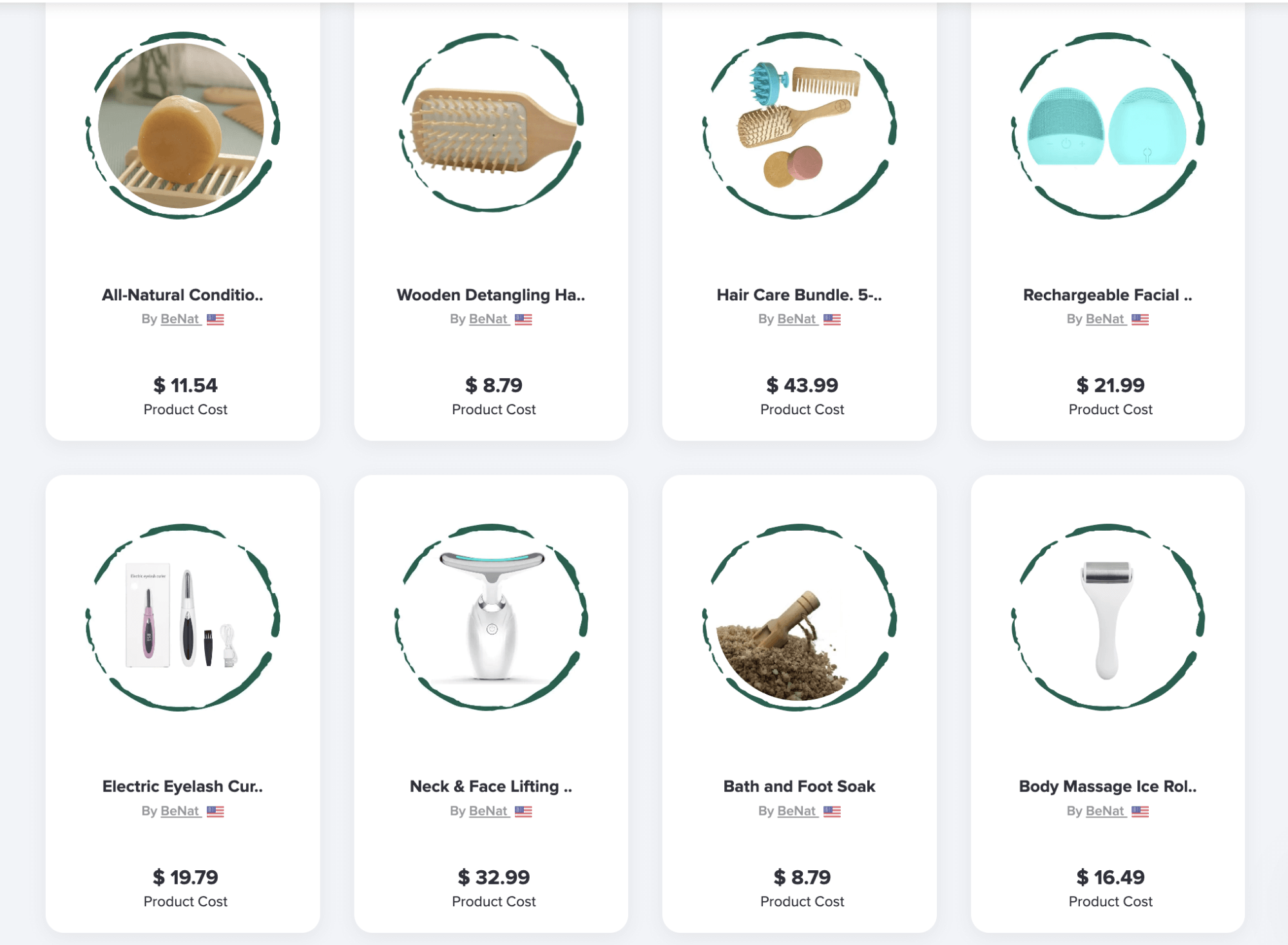
Quality control issues are another significant concern. Since dropshippers do not handle products directly, there is a risk of receiving subpar items from suppliers. This lack of control can lead to customer dissatisfaction, negative reviews, and potential returns, all of which can harm your business reputation.
Managing shipping complexities can also pose challenges. With multiple suppliers often involved, ensuring timely deliveries and accurate shipping costs can become complicated. Delays or miscommunication can lead to frustrated customers, impacting your overall sales and brand image.
Lastly, the dependence on suppliers is a critical factor to consider. Your business’s success hinges on the reliability and performance of your suppliers. If they fail to deliver on time or provide quality products, it reflects poorly on your business, even though you may not be directly at fault.
Conclusion
In summary, dropshipping offers a unique opportunity for aspiring entrepreneurs to enter the e-commerce space with minimal financial risk and operational complexity. However, it also comes with its own set of challenges, including low profit margins, high competition, and reliance on suppliers. By understanding both the advantages and challenges, you can make an informed decision about whether dropshipping aligns with your business goals and resources.
Step 1: Finding a Profitable Niche and Winning Products
What Makes a Good Niche?
Finding the right niche is a critical first step in launching a successful dropshipping business. A good niche should possess several key characteristics:
-
Passion and Interest: Choose a niche that resonates with you personally. Your enthusiasm will fuel your motivation and creativity, making it easier to connect with your target audience.
-
Market Demand: Ensure there is a substantial audience interested in your niche. Use tools like Google Trends to gauge interest levels over time. A niche with consistent or growing demand is preferable.
-
Profitability: Analyze the potential profit margins within your niche. Ideally, look for products that can offer margins of 20% to 50%. This will allow you to cover expenses while still making a profit.
-
Competition: While some competition is healthy, excessive competition can make it hard to penetrate the market. Look for niches that have a balance—enough demand but not an oversaturated market.
-
Target Audience: Understand who your potential customers are. Create customer personas to visualize their demographics, preferences, and shopping behavior. This will inform your marketing strategies and product selection.
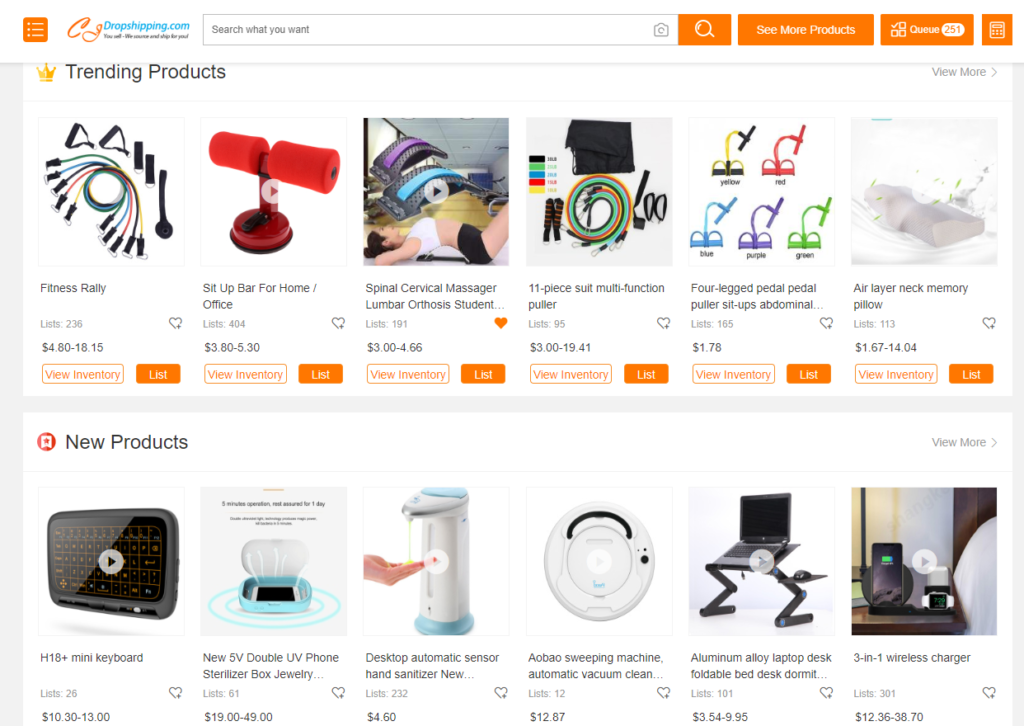
How to Brainstorm Niche Ideas
Once you understand what constitutes a good niche, it’s time to brainstorm ideas. Here are effective strategies to generate niche ideas:
-
Personal Interests and Hobbies: Start with what you love. Consider hobbies, passions, or skills you possess. If you’re passionate about fitness, for example, you might explore niches like home gym equipment or wellness products.
-
Market Research: Utilize online tools to identify trending topics and products. Websites like Google Trends, BuzzSumo, and AnswerThePublic can provide insights into what people are searching for.
-
Social Media Exploration: Platforms like Instagram, Pinterest, and TikTok can be goldmines for niche ideas. Observe popular hashtags, influencers, and viral products to spot emerging trends.
-
Competitor Analysis: Study successful dropshipping stores in your potential niches. Analyze their product offerings, pricing strategies, and customer engagement tactics. Identify gaps that you can fill.
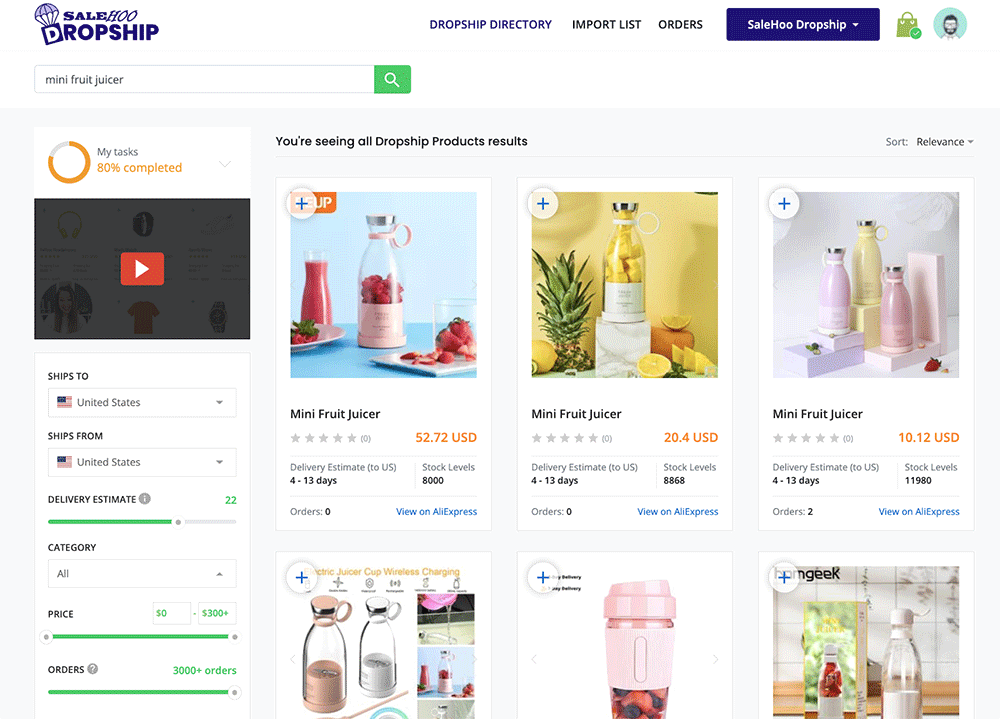
-
Forums and Community Groups: Engage in online communities related to your interests. Websites like Reddit, Quora, and niche-specific forums can provide insights into what problems people are facing and what products they desire.
Validating Your Niche
After generating niche ideas, it’s essential to validate them to ensure there’s a viable market. Here’s how to do that:
-
Keyword Research: Use tools like Google Keyword Planner or Ahrefs to identify search volume and competition for keywords related to your niche. High search volume with manageable competition is a good sign.
-
Surveys and Feedback: Conduct surveys or polls within your target audience. Use platforms like SurveyMonkey or social media to gather opinions on your niche and product ideas.
-
Test Selling: Consider setting up a landing page or a small online store to test the waters. Use paid ads to drive traffic and see if there’s genuine interest in your offerings.

-
Evaluate Competition: Look at the top competitors in your niche. Analyze their sales techniques, customer reviews, and product ranges. This will help you understand market saturation and potential differentiation points.
-
Check Supplier Availability: Ensure you can source products within your niche. Research suppliers on platforms like AliExpress, Oberlo, or local wholesalers to find reliable sources that align with your niche.
Methods for Finding Winning Products
Once you’ve validated your niche, the next step is to identify winning products. Here are methods and tools to aid your product research:
-
Supplier Marketplaces: Explore dropshipping platforms like AliExpress, SaleHoo, and Spocket. Use their filtering options to find products with high ratings, good reviews, and solid sales numbers.
-
Social Media Trends: Keep an eye on trending products on platforms like Instagram, TikTok, and Pinterest. Viral products often indicate high demand. Tools like Trend Hunter can also provide insights into emerging trends.
-
Google Trends: Use Google Trends to see if specific products are gaining popularity. Look for spikes in search volume, which can indicate rising interest.
-
Competitive Analysis: Research your competitors to see what products are performing well for them. Tools like Jungle Scout and Helium 10 can provide sales estimates for Amazon products, helping you identify potential bestsellers.
-
Criteria for a Good Dropshipping Product:
- Price Point: Look for products that can be sold at a price point of at least $20-$50, as this allows for adequate profit margins after expenses.
- Problem-Solving: Products that solve specific problems or fulfill unique needs tend to sell better.
- Compact and Lightweight: Choose products that are easy to ship and handle. This will reduce shipping costs and improve customer satisfaction.
-
Not Easily Found Locally: Items that are hard to find in local stores can encourage online purchases. This increases your chances of capturing a market segment that is willing to shop online.
-
Engagement Metrics: Check the engagement levels on social media posts about your potential products. High engagement can indicate strong interest and demand.
By focusing on these strategies and methodologies, you can effectively find a profitable niche and winning products for your dropshipping business. Remember, patience and persistence are key. The landscape of e-commerce is ever-changing, so stay adaptable and keep a pulse on market trends to sustain success.
Step 2: Choosing the Right Dropshipping Suppliers
Understanding the Importance of Choosing the Right Dropshipping Suppliers
Finding reliable dropshipping suppliers is crucial for the success of your online business. The right supplier can significantly impact your product quality, shipping times, and overall customer satisfaction. With numerous options available, it’s essential to evaluate suppliers carefully to ensure they meet your business needs.
Major Dropshipping Platforms
AliExpress
AliExpress is one of the most popular platforms for dropshipping due to its vast product range and low prices.
Pros:
– Extensive Product Range: AliExpress offers millions of products across various categories, making it easy to find items that fit your niche.
– Low Prices: Many suppliers on AliExpress offer competitive pricing, allowing you to maintain healthy profit margins.
– No Upfront Costs: You can list products without purchasing inventory upfront, which is ideal for beginners.
Cons:
– Long Shipping Times: Many products ship from China, leading to extended delivery times, which can frustrate customers.
– Variable Product Quality: Since AliExpress features numerous suppliers, the quality of products can vary significantly. This inconsistency can lead to customer dissatisfaction.
– Communication Barriers: Language differences and time zone issues can complicate communication with suppliers.
CJ Dropshipping
CJ Dropshipping is a comprehensive platform that offers a range of services tailored for dropshippers, including product sourcing, order fulfillment, and shipping.
Pros:
– Faster Shipping Options: CJ provides various shipping methods, including options for faster delivery times, which can enhance customer satisfaction.
– Quality Control: CJ often conducts quality checks on products, helping ensure that you receive items that meet your standards.
– Custom Branding: The platform allows for custom branding on packaging, which can improve your brand identity.
Cons:
– Higher Costs: While CJ offers quality products, the prices may be higher compared to AliExpress, which could affect your profit margins.
– Learning Curve: The platform can be more complex to navigate than simpler alternatives, requiring some time to learn its features.
– Limited Product Range: Although growing, CJ’s product selection may not be as extensive as AliExpress.
USA-Based Suppliers
Working with USA-based suppliers can significantly benefit your dropshipping business, especially if your target market is in the United States.
Pros:
– Faster Shipping Times: Products shipped within the U.S. typically arrive much faster than international shipping, enhancing customer satisfaction.
– Better Communication: Proximity can lead to easier communication with suppliers, facilitating smoother operations.
– Higher Product Quality: U.S. suppliers may have stricter quality control measures, resulting in more reliable products.
Cons:
– Higher Product Prices: Products from U.S. suppliers can be more expensive than those from overseas, which may narrow your profit margins.
– Limited Product Variety: The selection of products may be smaller compared to international platforms, making it harder to find unique items.
– Minimum Order Requirements: Some U.S. suppliers may have minimum order quantities, which can be a hurdle for new dropshippers.
What to Look for in a Good Supplier
When selecting a dropshipping supplier, consider the following checklist to ensure you make an informed decision:
- Communication:
-
Ensure the supplier is responsive and easy to communicate with. Quick responses to inquiries are essential for resolving issues and maintaining smooth operations.
-
Shipping Times:
-
Investigate the shipping times offered by the supplier. Fast shipping can lead to happier customers and repeat business.
-
Product Quality:
-
Look for suppliers with positive reviews and a history of delivering high-quality products. Request samples if possible to evaluate quality firsthand.
-
Return Policies:
-
Understand the supplier’s return and refund policies. A flexible and straightforward return policy can help you manage customer dissatisfaction effectively.
-
Pricing Structure:
-
Compare pricing among suppliers to ensure you can maintain healthy profit margins. Be cautious of hidden fees that could affect your bottom line.
-
Experience and Reputation:
-
Research the supplier’s reputation in the dropshipping community. Established suppliers with positive feedback are often more reliable.
-
Inventory Management:
-
Choose suppliers who offer real-time inventory updates to prevent selling out-of-stock items.
-
Integration Capabilities:
-
Assess whether the supplier can integrate seamlessly with your e-commerce platform, simplifying order processing and inventory management.
-
Product Range:
-
Ensure the supplier offers a wide range of products that fit your niche, allowing you to diversify your offerings.
-
Payment Options:
- Check if the supplier provides secure and flexible payment options, making transactions easier and safer for your business.
Conclusion
Choosing the right dropshipping supplier is a fundamental step in establishing a successful online business. By evaluating platforms like AliExpress, CJ Dropshipping, and USA-based suppliers, you can find the best fit for your needs. Remember to use the checklist provided to guide your selection process. As you embark on your dropshipping journey, prioritize building strong relationships with your suppliers to ensure a smooth and profitable operation. With diligence and the right choices, you can create a thriving online store that resonates with your target audience. Happy dropshipping!
Step 3: Building Your Online Store
Setting Up Your Online Store for Dropshipping
Starting your dropshipping journey requires a solid online presence, and building your online store is a crucial step. Shopify is one of the most popular platforms for e-commerce due to its user-friendly interface, extensive app ecosystem, and powerful features tailored for dropshipping. Below, we’ll break down the essential steps to set up your Shopify store effectively.
1. Choosing a Shopify Plan
Before diving into the design and functionality of your store, you need to choose a suitable Shopify plan. Shopify offers several pricing tiers, allowing you to select one that fits your budget and business needs:
- Basic Shopify: Ideal for beginners, this plan provides all the essential features to start your online store, including an online store, unlimited products, and 24/7 support.
- Shopify Plan: This plan includes more advanced reporting tools and better shipping discounts, making it suitable for those looking to scale.
- Advanced Shopify: Best for larger businesses, it includes advanced reporting and third-party calculated shipping rates.
Start with the Basic Shopify plan if you’re just beginning, and you can always upgrade as your business grows.
2. Picking a Theme
Your store’s theme plays a pivotal role in how customers perceive your brand. A well-designed, professional-looking theme can enhance user experience and drive sales. Here’s how to choose the right theme:
- Explore the Shopify Theme Store: Shopify offers a variety of free and paid themes. Look for themes that resonate with your brand and cater to your target audience.
- Consider Mobile Responsiveness: With a significant portion of online shopping done on mobile devices, ensure your chosen theme is mobile-friendly.
- Focus on Customization: Choose a theme that allows for easy customization so you can tailor it to your brand’s aesthetics without needing extensive coding knowledge.
Once you select a theme, you can customize it further in the Shopify editor, adjusting colors, fonts, and layouts to match your branding.
3. Setting Up Essential Pages
To build trust and provide necessary information to your customers, you must create essential pages. Here are the key pages to include:
- About Us: Share your story, mission, and values. This page helps customers connect with your brand on a personal level.
- Contact Page: Include a contact form, email address, and other ways for customers to reach you. Consider adding a chatbot for instant communication.
- Policies: Clearly outline your shipping, return, and privacy policies. This transparency can help mitigate disputes and enhance customer trust.
Make sure these pages are easy to find, ideally linked in your website’s footer or navigation menu.
4. Installing Key Apps
Shopify’s app ecosystem allows you to enhance your store’s functionality with various tools. Here are some essential apps for dropshipping:
- Import Tools: Use apps like DSers or CJ Dropshipping to import products easily from suppliers to your store. These tools streamline the process, allowing you to manage multiple suppliers efficiently.
- SEO Optimization: Consider installing an SEO app like Plug in SEO to help optimize your store for search engines, improving visibility and driving traffic.
- Email Marketing: Use apps like Klaviyo or Omnisend to set up email marketing campaigns that nurture leads and encourage repeat purchases.
Browse the Shopify App Store to find additional apps that can enhance your store’s capabilities based on your specific needs.
5. Setting Up Payment Gateways
To ensure a smooth transaction process for your customers, you need to set up payment gateways. Shopify supports various payment methods, including:
- Shopify Payments: This is the easiest option, as it integrates seamlessly into your store. It supports major credit cards and is available in multiple countries.
- PayPal: Adding PayPal as a payment option can increase conversions, as many customers prefer using it for online purchases.
- Other Payment Options: Consider offering additional payment methods such as Stripe, Apple Pay, or Google Pay to cater to different customer preferences.
To set up your payment gateways, navigate to the “Settings” section in your Shopify admin and select “Payments.” Follow the prompts to configure your chosen payment methods.
Alternative: WooCommerce
While Shopify is an excellent choice for many, WooCommerce is another viable option if you prefer using WordPress. WooCommerce is a plugin that transforms your WordPress site into a fully functional e-commerce store. It offers a high level of customization and is ideal for those who want to maintain more control over their site’s design and functionality. However, it may require a steeper learning curve and more technical knowledge compared to Shopify.
Conclusion
Building your online store for dropshipping doesn’t have to be overwhelming. By following these steps—choosing the right plan, picking an appealing theme, setting up essential pages, installing key apps, and configuring payment gateways—you’ll be well on your way to launching a successful e-commerce business. Remember, the key is to stay adaptable and continuously optimize your store based on customer feedback and market trends. Happy selling!
Step 4: Marketing Your Dropshipping Business to Get Sales
Social Media Marketing (TikTok & Instagram)
Social media is a powerful tool for marketing your dropshipping business, especially platforms like TikTok and Instagram, which thrive on visual content and trends. Here are actionable strategies to leverage these platforms effectively:
1. Create Engaging Content
- Tip: Use high-quality images and videos to showcase your products. Create short videos demonstrating product use, unboxing experiences, or customer testimonials.
- Example: If you’re selling skincare products, create a “morning routine” video featuring your products. Show before and after results to build trust.
2. Utilize Influencer Partnerships
- Tip: Collaborate with micro-influencers in your niche. They often have a more engaged audience and can promote your products authentically.
- Example: Reach out to beauty influencers with 5,000-50,000 followers to showcase your skincare line. Offer them free products in exchange for a review or feature.
3. Leverage User-Generated Content
- Tip: Encourage your customers to share photos or videos of themselves using your products. Repost this content to build community and trust.
- Example: Create a branded hashtag for your customers to use. Feature their posts on your profile, enhancing engagement and authenticity.
4. Run Contests and Giveaways
- Tip: Host contests that encourage user interaction, such as tagging friends or sharing your post to enter.
- Example: Offer a popular product from your store as a prize, requiring participants to follow your account, like the post, and tag three friends to enter.
5. Use Stories and Reels
- Tip: Regularly post stories and reels to keep your audience engaged. Use polls, quizzes, and Q&A sessions to interact with your followers.
- Example: Share behind-the-scenes content of your business operations or quick tips related to your products to keep your audience informed and entertained.
Paid Advertising (Facebook/Instagram Ads)
Paid advertising is an effective way to reach a targeted audience quickly. Here’s how to maximize your ad campaigns:
1. Define Your Target Audience
- Tip: Use Facebook’s Audience Insights to understand your potential customers’ demographics, interests, and behaviors.
- Example: If you sell dog accessories, target dog owners by selecting interests related to pets, dog training, and pet supplies.
2. Create Compelling Ad Copy and Visuals
- Tip: Use eye-catching visuals and a clear call-to-action (CTA). Your ad should immediately convey the value of your product.
- Example: For a new handbag line, create a vibrant ad showing the bag in various settings (e.g., at a café, a park), with a CTA like “Shop Now for 20% Off Your First Order!”
3. A/B Test Your Ads
- Tip: Run A/B tests to compare different ad formats, copy, and visuals to see which performs better.
- Example: Test two versions of your ad—one with a video showcasing the product and another with a static image. Analyze which one drives more traffic and conversions.
4. Retarget Past Visitors
- Tip: Use retargeting ads to reach people who have previously visited your website but didn’t make a purchase.
- Example: Create ads that remind visitors of the products they viewed, offering a limited-time discount to encourage them to complete their purchase.
5. Monitor and Optimize Performance
- Tip: Regularly review your ad performance metrics (CTR, conversion rate, ROAS) and adjust your strategy accordingly.
- Example: If an ad has a high CTR but low conversion, consider revising your landing page or adjusting your offer to better align with audience expectations.
Search Engine Optimization (SEO)
Optimizing your dropshipping store for search engines can significantly increase organic traffic. Here’s how to get started:
1. Conduct Keyword Research
- Tip: Use tools like Google Keyword Planner or Ubersuggest to identify relevant keywords related to your products.
- Example: If you sell fitness gear, target keywords like “best yoga mats,” “affordable gym equipment,” or “eco-friendly workout gear.”
2. Optimize Product Descriptions
- Tip: Write unique, detailed product descriptions that include your target keywords naturally.
- Example: Instead of a generic description, detail the benefits, materials, and usage of your yoga mat, incorporating keywords seamlessly.
3. Improve Site Speed and Mobile Responsiveness
- Tip: Ensure your website loads quickly and is mobile-friendly, as Google prioritizes user experience.
- Example: Use tools like Google PageSpeed Insights to identify areas for improvement. Optimize images and minimize code to enhance load times.
4. Create Valuable Content
- Tip: Start a blog related to your niche to attract visitors and improve your SEO. Write articles that address customer pain points or interests.
- Example: If you sell home decor, create blog posts on “10 Tips for Styling Your Living Room” or “Trends in Home Decor for 2024.”
5. Build Backlinks
- Tip: Engage in guest blogging, partnerships, or collaborations to earn backlinks from reputable websites.
- Example: Reach out to home decor blogs to write guest posts that link back to your store, enhancing your authority in the niche.
Email Marketing
Email marketing remains one of the most effective strategies for driving sales. Here’s how to build and optimize your email campaigns:
1. Build an Email List
- Tip: Use pop-ups or landing pages to collect email addresses in exchange for discounts, free guides, or exclusive content.
- Example: Offer a “10% Off Your First Purchase” incentive for new subscribers, encouraging them to sign up.
2. Segment Your Audience
- Tip: Segment your email list based on customer behavior, demographics, or purchase history to send targeted messages.
- Example: Create separate lists for first-time buyers, repeat customers, and those who abandoned their carts, tailoring your messaging to each group.
3. Craft Compelling Subject Lines
- Tip: Write engaging subject lines that encourage recipients to open your emails. Use urgency, personalization, or curiosity.
- Example: Use subject lines like “Last Chance for 20% Off!” or “We Miss You! Here’s a Special Offer Just for You.”
4. Automate Your Campaigns
- Tip: Utilize email marketing tools like Mailchimp or Klaviyo to automate welcome sequences, cart abandonment emails, and post-purchase follow-ups.
- Example: Set up an automated email to remind customers about items left in their cart after 24 hours, including an incentive to complete their purchase.
5. Analyze and Optimize Campaigns
- Tip: Regularly review metrics such as open rates, click-through rates, and conversion rates to assess your email performance.
- Example: If your open rates are low, experiment with different subject lines or send times. If click-through rates are underwhelming, enhance your email content and CTAs.
By implementing these marketing strategies, you can effectively promote your dropshipping business, drive traffic to your store, and ultimately increase sales. Remember, consistency and adaptability are key—keep testing and refining your approach as you grow!
Common Mistakes to Avoid as a Beginner
1. Choosing a Bad Niche
One of the most significant mistakes beginners make is selecting a niche that is either overly saturated or lacks demand. A poorly chosen niche can lead to low sales and high competition, making it challenging to establish a profitable business.
Solution: Conduct thorough market research to identify trending products and niches with a balance of demand and competition. Use tools like Google Trends, social media insights, and competitor analysis to find a niche that excites you and has growth potential. Focus on underserved markets or unique products that can set you apart.
2. Not Testing Products
Many newcomers jump straight into selling products without testing their quality or marketability. This can lead to issues with customer satisfaction and returns, damaging your brand’s reputation.
Solution: Before committing to a product, order samples from your suppliers to evaluate their quality and shipping times. Additionally, consider running small-scale tests through platforms like Facebook or Instagram ads to gauge customer interest before fully launching a product.
3. Poor Customer Service
Customer service can make or break your dropshipping business. Beginners often overlook the importance of responding promptly to inquiries and resolving issues, which can lead to negative reviews and lost customers.
Solution: Establish a robust customer service strategy that includes clear communication channels (email, chat, etc.) and set up an FAQ section on your website. Aim to respond to customer inquiries within 24 hours and handle returns or complaints swiftly to build trust and loyalty.
4. Ignoring Shipping Times
Shipping times are crucial in e-commerce, and many beginners underestimate their impact on customer satisfaction. Long or unpredictable shipping times can lead to frustrated customers and increased refund requests.
Solution: Choose suppliers that offer reasonable shipping times and communicate these clearly on your website. Consider using local suppliers for faster delivery, and keep customers informed about their order status through tracking information. Transparency in shipping can help manage expectations and reduce dissatisfaction.
5. Unrealistic Profit Expectations
Many beginners enter dropshipping with the misconception that they can quickly earn significant profits with little effort. This unrealistic mindset can lead to frustration when sales don’t meet expectations.
Solution: Set realistic profit goals based on thorough market analysis and understand that building a successful dropshipping business takes time and effort. Calculate your margins carefully, considering all expenses (product costs, shipping, advertising, etc.), and be prepared for gradual growth rather than overnight success.
6. Neglecting Marketing Efforts
Some beginners assume that simply setting up an online store will lead to sales. However, without effective marketing, even the best products can go unnoticed.
Solution: Develop a marketing strategy that includes a mix of social media marketing, email campaigns, content marketing, and SEO. Utilize platforms like Facebook, Instagram, and TikTok to reach your target audience, and consider investing in paid ads to boost visibility. Regularly analyze your marketing efforts to see what works and what doesn’t.
7. Failing to Build a Brand
Many aspiring dropshippers treat their store like a mere sales platform rather than building a recognizable brand. This can lead to a lack of customer loyalty and difficulty in standing out.
Solution: Invest time in creating a unique brand identity that resonates with your target audience. This includes designing a professional logo, developing a consistent visual theme, and crafting a compelling brand story. Engage with your customers through social media and email to foster a community around your brand.
8. Overcomplicating the Business Model
Beginners often make the mistake of overcomplicating their dropshipping operations by trying to manage too many products or suppliers at once. This can lead to confusion and inefficiencies.
Solution: Start small with a limited product range and a few reliable suppliers. Focus on mastering the dropshipping process before expanding. Once you feel confident, gradually add more products or suppliers while maintaining quality control.
9. Ignoring Analytics
Many beginners overlook the importance of analytics in their dropshipping business. Without tracking key metrics, it’s challenging to understand what’s working and what needs improvement.
Solution: Use analytics tools to monitor your website traffic, sales conversions, and customer behavior. Key metrics to watch include the average order value, customer acquisition cost, and return rates. Regularly review these metrics to inform your marketing strategies and product offerings.
10. Not Building Relationships with Suppliers
Some beginners treat suppliers as mere transactional relationships, which can lead to miscommunication and issues down the line.
Solution: Invest time in building strong relationships with your suppliers. Communicate regularly, provide feedback, and ensure they understand your business needs. A good relationship can lead to better pricing, priority support, and improved product quality.
By avoiding these common mistakes, you can set a strong foundation for your dropshipping business and increase your chances of long-term success. Remember, every entrepreneur makes mistakes; it’s how you learn and adapt that truly matters. Stay persistent, keep learning, and don’t hesitate to seek guidance when needed.
Frequently Asked Questions (FAQs) about top dropshipping items
1. What are the top dropshipping items to sell?
The top dropshipping items often include categories like clothing and fashion accessories, home goods, electronics, pet supplies, and beauty products. Items like unique gadgets, trendy clothing, eco-friendly products, and personalized gifts are particularly popular. To find the best items, research current trends on platforms like Google Trends, social media, and competitor websites.
2. How much money do I need to start a dropshipping business?
Starting a dropshipping business can be relatively low-cost compared to traditional retail models. You can begin with as little as $200 to $500, primarily for setting up your e-commerce website, marketing, and initial costs for tools or platforms. However, investing more can help you access better resources and marketing strategies for growth.
3. Do I need to register a company to start dropshipping?
While it’s not strictly necessary to register a company to start dropshipping, it is highly recommended. Registering your business can provide you with legal protection, enhance your credibility, and allow you to open a business bank account. Consider checking local regulations regarding business registration and permits to ensure compliance.
4. How do I find reliable suppliers for dropshipping?
Finding reliable suppliers is crucial for your dropshipping success. Research potential suppliers on platforms like AliExpress, SaleHoo, or Oberlo. Look for suppliers with good reviews, a solid track record, and responsive customer service. Establish a relationship with them and request samples to assess product quality before listing their items on your store.
5. What is the difference between dropshipping and print on demand?
Dropshipping involves selling products that are manufactured and shipped by a third party, while print on demand allows you to create and sell custom-designed products that are printed and shipped only after an order is placed. Print on demand offers more creative flexibility, making it ideal for personalized products like clothing, mugs, and art.
6. How do I handle returns and refunds in a dropshipping business?
Handling returns and refunds in dropshipping can be challenging since you don’t hold the inventory. Establish clear return policies on your website, and communicate these to your customers. Work closely with your suppliers to understand their return policies and relay this information to your customers. Make sure to provide excellent customer service to handle any issues that arise.
7. Can I dropship internationally?
Yes, you can dropship internationally, but there are several factors to consider, such as shipping costs, delivery times, and customs regulations. Choose suppliers that offer international shipping and clearly communicate shipping times and costs to your customers. Additionally, be aware of any import taxes or duties that might apply to your products in different countries.
8. How do I market my dropshipping store effectively?
Effective marketing is crucial for the success of your dropshipping business. Utilize social media platforms, influencer partnerships, and email marketing to reach your target audience. Consider investing in paid advertising through platforms like Facebook or Google Ads. Additionally, create engaging content that showcases your products and builds a community around your brand.
9. What are the best platforms to start a dropshipping business?
Popular platforms for dropshipping include Shopify, WooCommerce, and BigCommerce. These platforms offer user-friendly interfaces, integrations with various payment gateways, and support for dropshipping plugins. Choose a platform that aligns with your technical skills and business needs, and consider starting with a free trial to test its features.
10. How do I keep track of my dropshipping orders and inventory?
Many e-commerce platforms offer built-in order and inventory management tools. Additionally, consider using dropshipping automation software that integrates with your store to streamline order fulfillment, track inventory levels, and manage supplier communications. Regularly monitor your orders and inventory to ensure timely deliveries and maintain customer satisfaction.
Conclusion: Your Next Steps to Launching Your Business
Getting Started with Your Dropshipping Business
Embarking on your dropshipping journey can be an exciting and rewarding venture, but it’s essential to approach it with a realistic mindset. Here are the key steps to help you launch your business successfully:
-
Research Your Niche: Identify a profitable niche by examining market trends and consumer demands. Utilize tools like Google Trends and social media to discover what products are gaining traction.
-
Select Reliable Suppliers: Partnering with trustworthy suppliers is crucial. Look for those who offer quality products, competitive pricing, and efficient shipping. Consider using platforms like TopDawg or Gelato to find vetted suppliers.
-
Build Your Online Store: Choose an e-commerce platform that suits your needs, such as Shopify or WooCommerce. Invest time in designing an attractive, user-friendly website that showcases your products effectively.
-
Market Your Business: Develop a marketing strategy that includes social media promotion, SEO, and paid advertising. Engaging content and targeted campaigns can drive traffic to your store and increase sales.
-
Test and Optimize: Launch your store and monitor its performance. Use analytics tools to track customer behavior, sales patterns, and product performance. Be prepared to adapt your strategy based on the data you collect.
Commit to Learning and Growth
Remember, dropshipping is not a get-rich-quick scheme. It requires dedication, continuous learning, and effort to build a sustainable business. Embrace the challenges you encounter along the way as opportunities for growth.
Take Action Today
Are you ready to turn your entrepreneurial dreams into reality? Take that first step today—whether it’s conducting market research, selecting your niche, or setting up your online store. Your journey into the world of dropshipping awaits, and the potential for success is in your hands. Start today, and let your passion for e-commerce lead you to new heights!
Important Disclaimer
⚠️ Important Disclaimer
The information provided in this guide is for educational purposes only. Starting a business involves risks, and success is not guaranteed. Please conduct your own thorough research and consider consulting with financial and legal professionals before making any business decisions.
